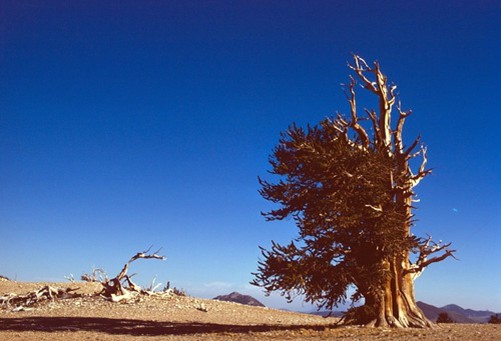
Credit: USDA
The oldest individual trees are conifers—but they’re not the famous sequoias. Some of those exceed 3,000 years. But bristlecone pines are centuries, even millennia, older.
They’ve adapted to small, high and dry ranges in eastern California, Nevada and Utah, just below the tree line.
The oldest trees live in the harshest conditions, where few other plants can grow, so they’re less likely to be exposed to fire, insects or disease. And the oldest of them all was a tree named Methuselah.
Bristlecone pines have unusual growing habits. They are extremely slow, adding only one inch of height per century.
Their roots support only the part of the tree directly above them, so if some roots die only that part of the tree dies.
The bristlecone then twists, very slowly, to face the dead part of the tree toward the wind, to take the brunt of the elements and protect the living part of the tree.
The large areas of dead wood on the trees allowed scientists to sample the rings of Methuselah and found it was almost 4,800 years old. Centuries older than the pyramids of Egypt.
Recently, an even more ancient bristlecone was found—at more than 5,000 years old.
If a seed from one of these old-timers started growing today, we’d be ringing in the year 7023 before it’s as old.
Background
Synopsis: As the old year rolls out, Earth’s oldest known continuously living tree with a name is turning 4,855 years old. Earth’s longest living individual trees are bristlecone pines, and the granddaddy of them all was thought to be Methuselah, growing in the White Mountains of Inyo County, California. However, researchers recently discovered that Methuselah has a 216-year-older neighbor that remains unnamed, turning 5,074 in 2023. It was more than 400 years old when the first pyramid was built in Egypt.
- As the end of the year approaches, cartoonists often invoke images of an old man, Father Time, presenting a baby New Year—an opportunity for a new start.
- The oldest man in recorded history is Methuselah, from the Bible’s book of Genesis.
- The grandfather of Noah, who is believed to have lived 969 years, died in the year of the great flood; however, it is not clear if he died before, during or after the flood.

Father Time presents the New Year of 1886 in a political cartoon.
Credit: Joseph Keppler, public domain, via Wikimedia Commons
- There is another world-famous Methuselah, a bristlecone pine tree living in the Ancient Bristlecone Pine Forest in the White Mountains of Inyo County, California.
- Methuselah sprouted in 2832 BC and turns 4,855 years old in 2023.
- The tree was 200 years old when Egypt’s first pyramid was built by King Djoser’s architect, Imhotep.
- In 1957, scientists verified that the tree had 4,789 rings, and it continues to add rings each year.
- Methuselah may be Earth’s longest living individual tree that is named, but, in 2009, scientists identified an even older tree in the same forest that remains unnamed. To protect the tree, its location is kept a secret.
- This older tree sprouted in 3051 BC and will be 5,074 in 2023.
- This tree was a sapling during the transition from the Neolithic Period into the Bronze Age, when humans were building the earliest parts of Stonehenge, domesticating horses, and casting the earliest bronze axles for use with wheels.
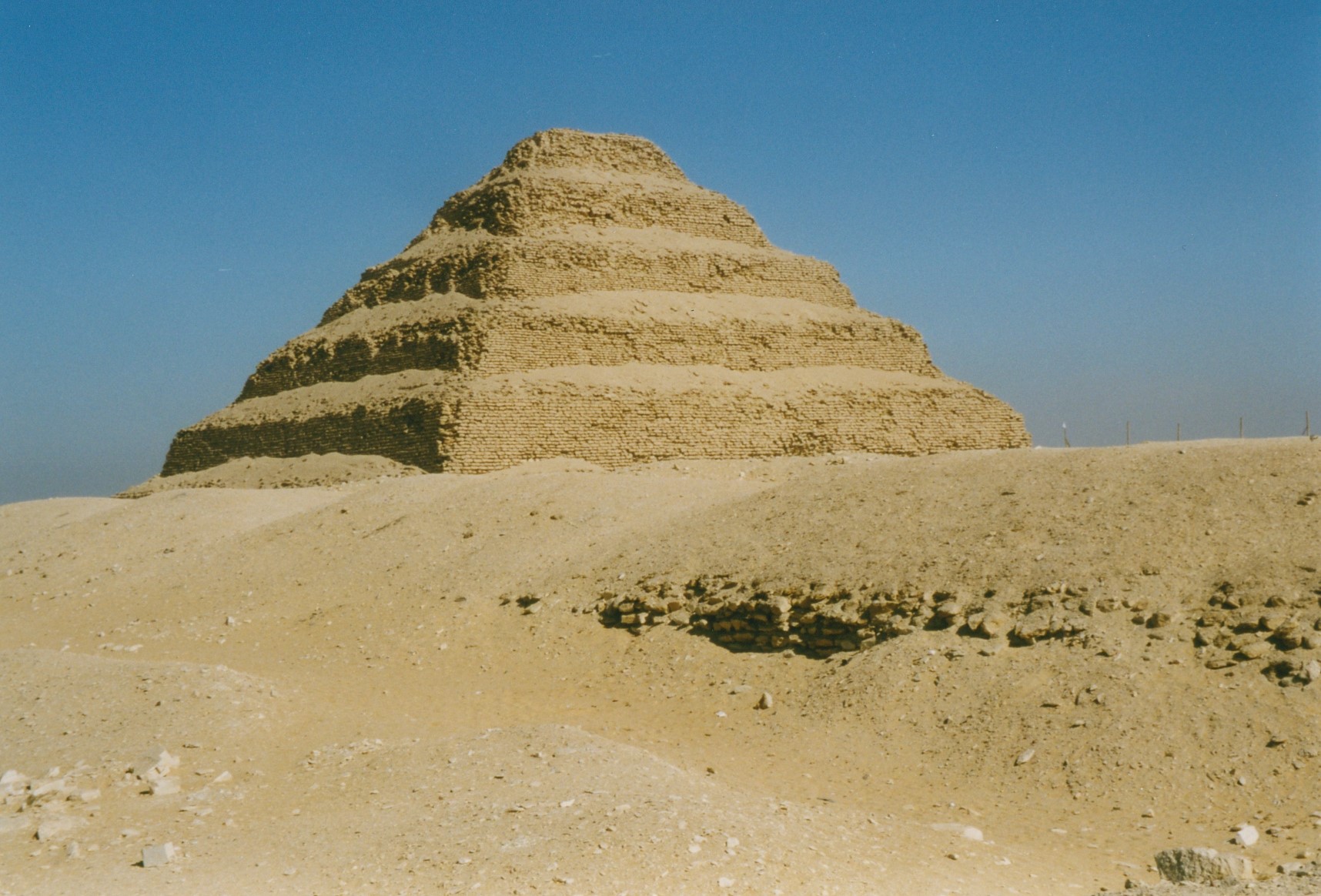
The two ancient bristlecone pines would have been 200 and 400 years old when the architect Imhotep built Egypt’s first pyramid near Saqqara between 2630–2611 BC—the famous step pyramid of Djoser.
Credit: Arian Zwegers from Brussels, Belgium, via Wikimedia Commons
- Bristlecone pines are Earth’s longest-lived trees, but Pinus longaeva has a very limited range, confined to high elevation areas of eastern California, Nevada and Utah, just below the tree line. At 10,000 ft (3,050 m) elevation, the Ancient Bristlecone Pine Forest is located in California’s Inyo National Forest, in the White Mountains east of Yosemite and the Sierra Nevada range.
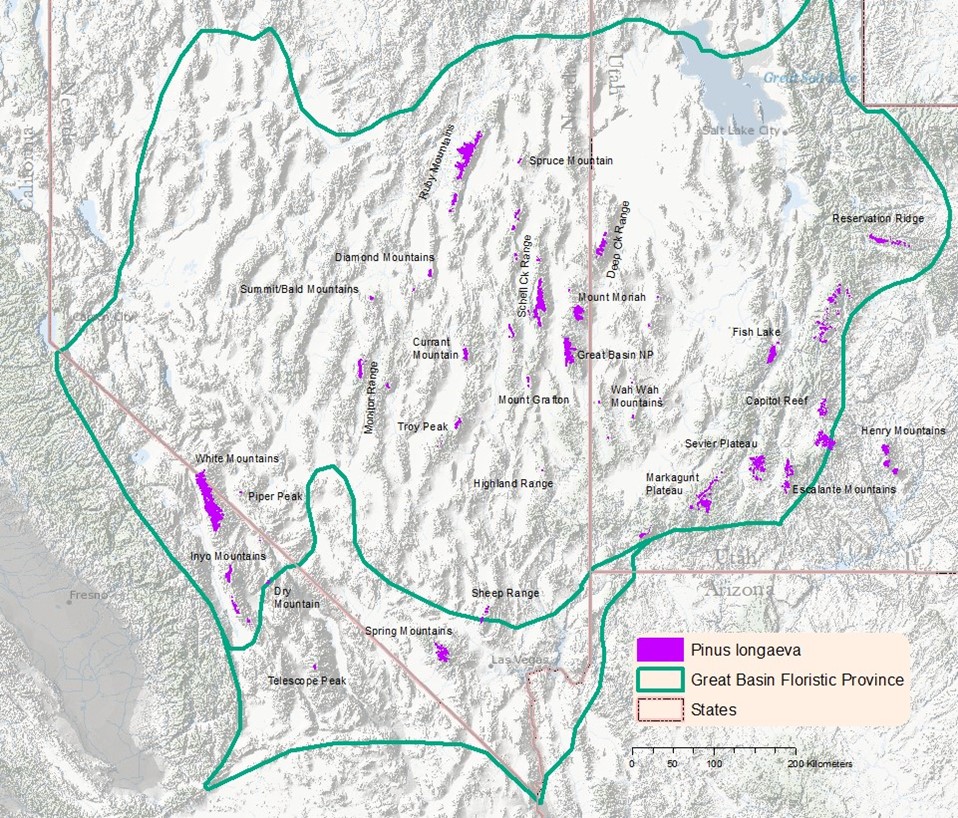
Natural distribution map for Pinus longaeva
Credit: Merced river, via Wikimedia Commons- Methuselah and the older unnamed tree live in this high-altitude desert habitat characterized by extreme temperatures and winds.
- As a rule of thumb, the oldest conifers in an area tend to grow on the driest sites, because arid sites have less risk of fire, insects, fungus and logging.
- There may be older bristlecone pines that have not yet been discovered.
- Bristlecone pines have a special adaptation called sectored architecture, meaning that the tree roots feed only the sector of the tree directly above them, so if a root dies, only the part of the tree directly above the root dies.
- The living sectors of the trees are marked by strips of bark from root to needles that protect the growth tissue or vascular cambium of the tree. The vascular cambium produces new cells of xylem toward the inside and phloem toward the bark of the tree.
- In strip-bark trees, the bark dies back from the dead sectors, with strips of living bark twisted away toward the leeward side of the tree for protection.
- The dead wood takes the full force of windblown sand and ice crystals, gradually eroding the trees into skeletal forms.
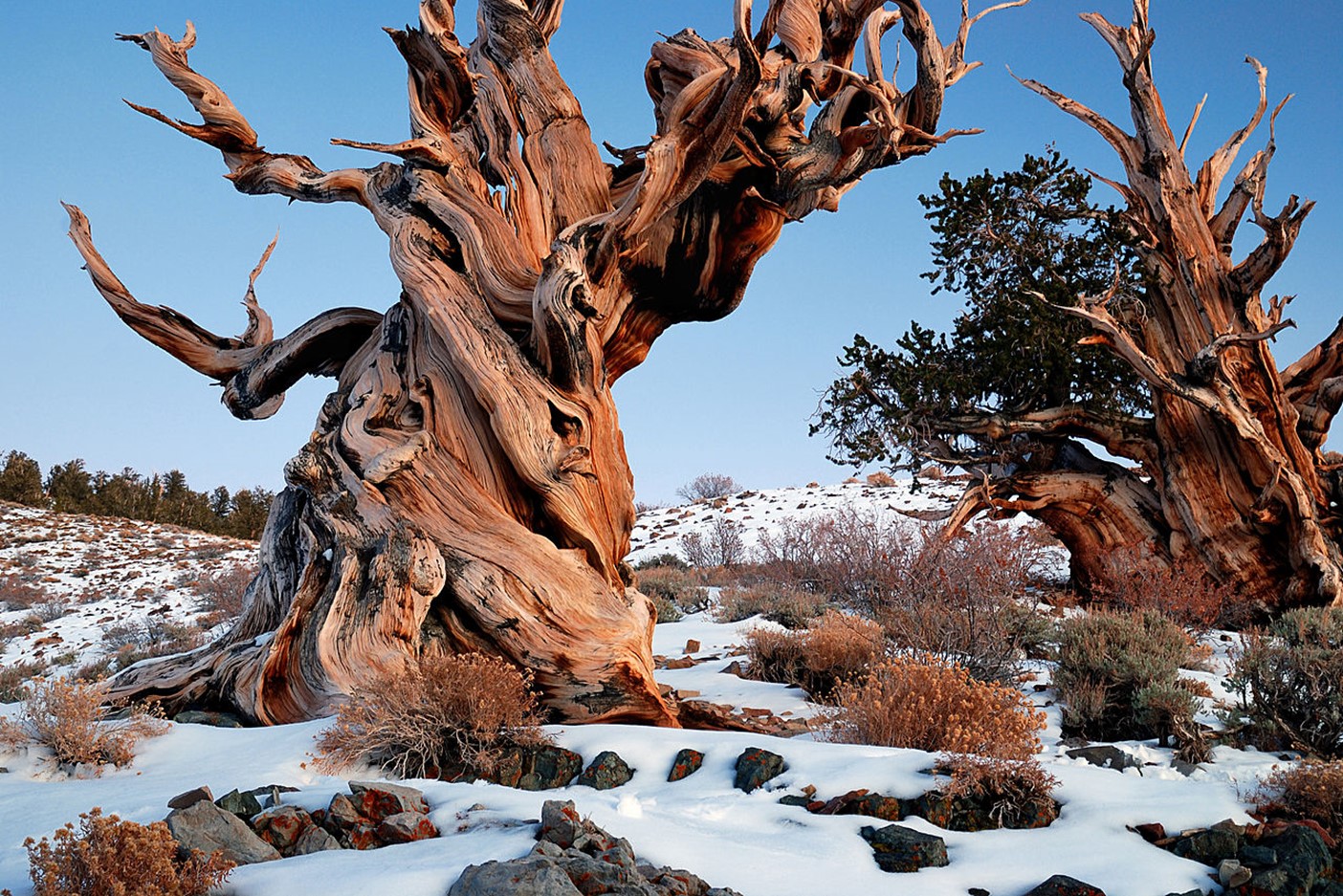
These ancient bristlecone pines have twisted their living bark and branches away from the elements, protectively exposing their dead wood to erosion.
Credit: Rick Goldwaser from Flagstaff, AZ, USA, via Wikimedia Commons
- Bristlecone pines only grow about an inch per century, but their tree rings can be assembled to provide a climate record that extends back 9,000 years.
- Prometheus, a bristlecone pine in Nevada’s Great Basin, was felled in 1964 for study. Only then did the scientist responsible realize that the tree was 4,862 years old. A slab of the ancient tree can be examined at the Great Basin Visitor Center.
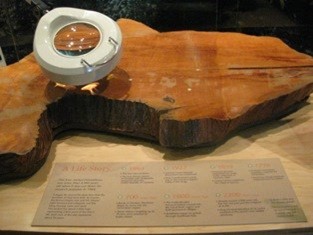
Prometheus slab at the Great Basin Visitors Center.
Credit: NPS PHOTO
- Prometheus, a bristlecone pine in Nevada’s Great Basin, was felled in 1964 for study. Only then did the scientist responsible realize that the tree was 4,862 years old. A slab of the ancient tree can be examined at the Great Basin Visitor Center.
- Recently, researchers have modeled the age of “Gran Abuelo,” a type of conifer known as an alerce (Fitzroya cupressoides) in the Chilean Andes as 5,400 years old, 350 years older than the unnamed Inyo County bristlecone, Methuselah’s older cousin.
- This age is contested because the sheer size of the living tree made it impossible to count all the rings. So, scientists modeled its age by estimating its growth rate for the rings that could not be counted, then adding those years to the 2,465 years of rings they could count.
- Other record-breaking trees:
- Earth’s largest trees, the Sequoias, also live in California, with the oldest stump on record at 3,266 years old.
- In a previous EarthDate episode (ED-162 Pando – A Forest of One), we learned about an Aspen grove named Pando that is thought to be made of the oldest clonal organisms on Earth. It sprouted 80,000 years ago from a seed the size of a pepper grain and now supports almost 50,000 trunks, making it the heaviest living thing in the world. Clonal organisms replace dead trunks by sprouting new trunks continually.
- In the spirit of rejuvenation for the coming New Year, here is a thought question:
- If Methuselah germinated today, its lifespan would last until 6876, and if its unnamed elder neighbor germinated today, it would have a lifespan ranging out to 7092.
- What will Earth be like in the seventh millennium?
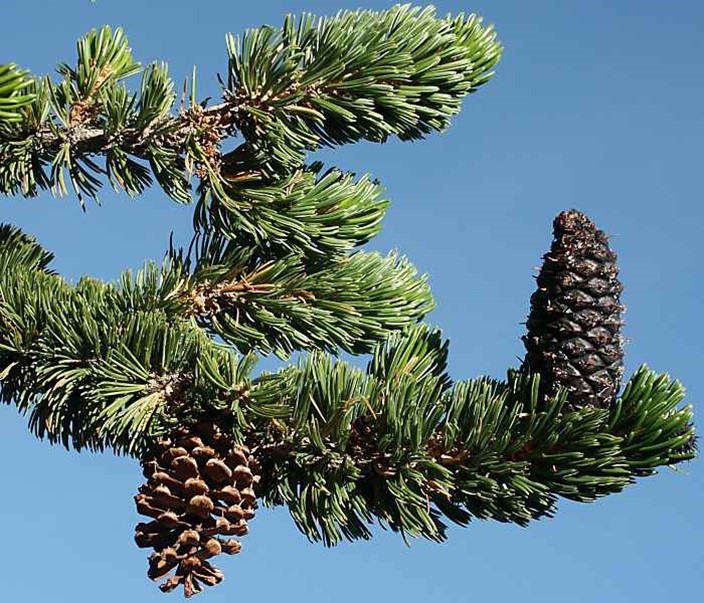
A branch of a bristlecone pine in the Snake Range of Nevada, showing closely grouped needles, an immature cone (right) and a mature cone (left).
Credit: Famartin, via Wikimedia Commons

